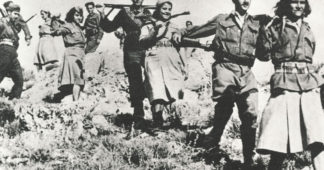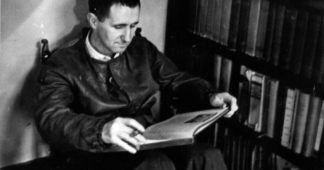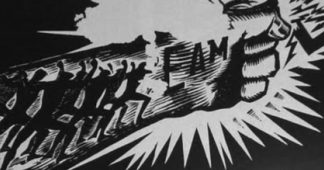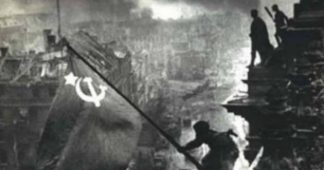Shortly before Christmas, on December 22, 1942, eleven men and women from the German anti-fascist resistance were executed for high treason at the Plötzensee execution site in Berlin, including Harro Schulze-Boysen and his wife Libertas, as well as Arvid Harnack. The Gestapo saw in them the leading figures of an international anti-fascist network, which they had grouped together under the name “Red Orchestra.”
In fact, there was such a network, to which the Schulze-Boysen/Harnack organization can also be counted, which had been built up by Leopold Trepper in Paris, Brussels and other places. In addition to practical resistance against the German occupiers, they also carried out intelligence reconnaissance work on behalf of the Soviet military intelligence service (GRU). Trepper himself stated in a report from the summer of 1943 that from May 1940 to November 1942, 1500 radio messages went to Moscow through this network in France, Belgium, Holland and Germany.
Until today, about 400 persons are known by name who can be attributed to the network of the “Red Orchestra”. As researchers know today, they were involved in a good ten different organizational contexts. They printed illegal leaflets, helped the politically and racially persecuted and documented the crimes of the Nazi regime.
In the German Reich, the network included about 150 artists, students, workers, civil servants and intellectuals, including many women, who worked together in small informal circles on the initiative of Harro Schulze-Boysen and the government councilor Arvid Harnack. As an officer in the Reich Air Ministry, Schulze-Boysen possessed information about the planned attack on the Soviet Union, so on June 17, 1941, five days before the invasion, he transmitted a warning to the Soviet embassy in Berlin, which forwarded it to Moscow. After the invasion, members of the group attempted to establish radio contact with Moscow themselves in order to pass on military information directly.
In addition, the Nazi opponents helped persecuted persons to escape, supplied forced laborers with food, tried to inform foreign countries about German war plans, and pasted anti-fascist notes on house walls in Berlin. As early as spring 1942, the group spread the slogan: “This war is lost.”
It took until the fall of 1942 for the Gestapo to succeed in exposing this German part of the network. Over 100 men and women were arrested. The first trial took place before the Reich Military Court, although most of them were civilians. Of course, it was not a trial under the rule of law. The sentences were fixed. In the trials, 30 men and 19 women were sentenced to death by the court martial. Eleven of the sentences were carried out as early as December 22, 1942, in Berlin Plötzensee – by hanging or the guillotine. The remaining defendants were sentenced to long prison terms.
In November 1942, the Gestapo had also succeeded in arresting activists of the “Red Orchestra” in France, including Leopold Trepper. During the interrogations, Trepper mock-accepted the Gestapo’s offer to operate a “radio game” for the German foreign intelligence service as a double agent. During this activity, he managed to escape from Gestapo custody on September 13, 1943. He hid illegally in France for several months before finally escaping to Moscow at the end of the war.
There were many years of sharp historical-political disputes about this anti-fascist resistance, especially in German memory. In the FRG, the “Red Orchestra” was denied recognition as a resistance group for many decades. Influenced by Cold War, it was viewed primarily as a “Soviet spy organization,” which did not allow for any appreciation as a resistance fighter. Even the U.S. intelligence agency CIC had been observing surviving members of the “Red Orchestra” as alleged Soviet spies since 1947.
In the GDR, on the other hand, the resistance of this group was focused primarily on the scouting activities they would have carried out for the good cause during the war on the instructions of Soviet intelligence. In that way, the resistance in its whole width was reduced to an area.
The FIR honors the actions of these women and men of the “Red Orchestra” as a great contribution of the international resistance in the ranks of the anti-Hitler coalition.
Also read The Great Game: Memoirs of the Spy Hitler Couldn’t Silence
We remind our readers that publication of articles on our site does not mean that we agree with what is written. Our policy is to publish anything which we consider of interest, so as to assist our readers in forming their opinions. Sometimes we even publish articles with which we totally disagree, since we believe it is important for our readers to be informed on as wide a spectrum of views as possible.












